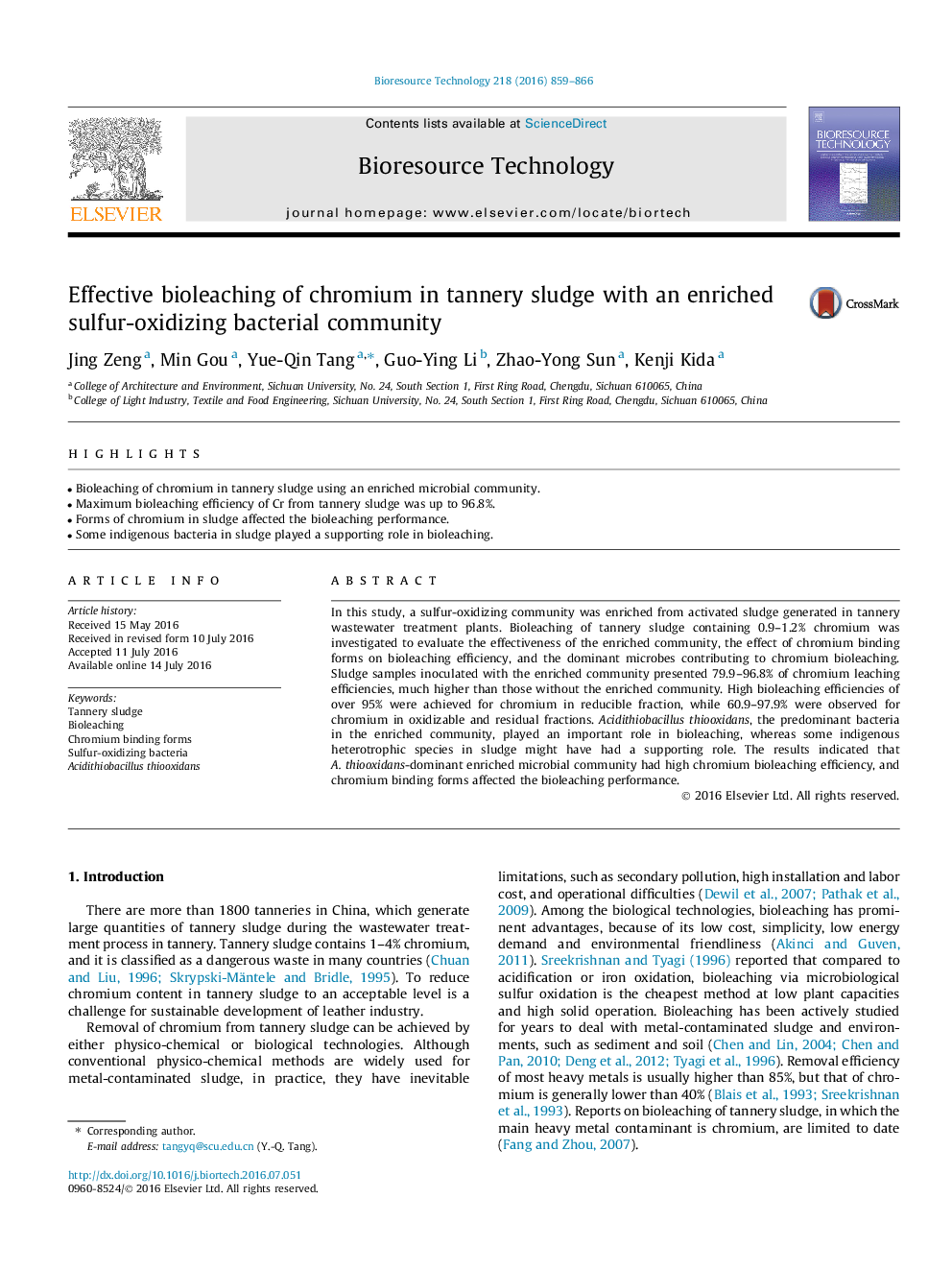| Article ID | Journal | Published Year | Pages | File Type |
|---|---|---|---|---|
| 7070699 | Bioresource Technology | 2016 | 8 Pages |
Abstract
In this study, a sulfur-oxidizing community was enriched from activated sludge generated in tannery wastewater treatment plants. Bioleaching of tannery sludge containing 0.9-1.2% chromium was investigated to evaluate the effectiveness of the enriched community, the effect of chromium binding forms on bioleaching efficiency, and the dominant microbes contributing to chromium bioleaching. Sludge samples inoculated with the enriched community presented 79.9-96.8% of chromium leaching efficiencies, much higher than those without the enriched community. High bioleaching efficiencies of over 95% were achieved for chromium in reducible fraction, while 60.9-97.9% were observed for chromium in oxidizable and residual fractions. Acidithiobacillus thiooxidans, the predominant bacteria in the enriched community, played an important role in bioleaching, whereas some indigenous heterotrophic species in sludge might have had a supporting role. The results indicated that A. thiooxidans-dominant enriched microbial community had high chromium bioleaching efficiency, and chromium binding forms affected the bioleaching performance.
Related Topics
Physical Sciences and Engineering
Chemical Engineering
Process Chemistry and Technology
Authors
Jing Zeng, Min Gou, Yue-Qin Tang, Guo-Ying Li, Zhao-Yong Sun, Kenji Kida,
